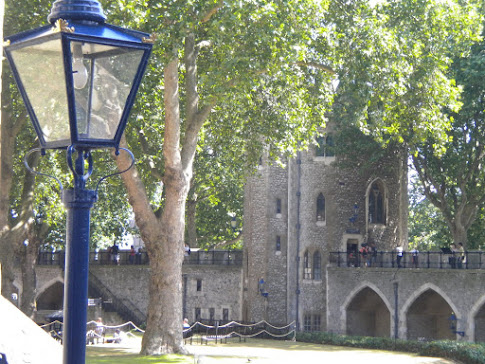
Image courtesy of History Today and can be found here. This is also one of the posters on exhibit in Forward to Freedom: The Anti-Apartheid Movement and the Liberation of Southern Africa at the Museum of London.
The Museum of London defies the stereotype of a stuffy and stodgy old museum. With a focus on interactive exhibits, marketing campaigns, value-added services, and school curriculum services, the museum is taking an aggressive approach in bringing its collection to the people. And their methods have succeeded; the Museum of London hosts over 400,000 visitors annually-more than half of which are Londoners.
The current featured exhibit explores the history of ancient London and Neolithic man. Immediately, you feel like you are walking through time. Following the effects of the Thames River on the development of London with the sounds of the land and the river under your feet and the air and birds over your head, you are firmly placed in the moment as you view the tools, habitats, and animals of the time period.
While the featured exhibit, it is by far not the only one. My two favorite exhibits were from more modern times-the Great Fire of 1666 and an exhibit of London's role in the 20th century battle against apartheid in South Africa.
As far as the latter exhibit goes I was very pleased, yet admittedly surprised, to see how brutally honest it was in terms of England's role in South African apartheid. No rose-colored glasses here. Advertisements, petitions, and more are on display to show the anger of the English people at the business community and government's lack of action and sometimes encouragement of apartheid for their own agenda.
It was reassuring to see a community be so willing to accept the faults of a recent generation, especially one with so many surviving members, in the hope that history's mistakes will not be repeated. And with 400,000 visitors annually, one can be sure that the message has not been put in some back corner of a marginalized museum where it would be unable to impact the community at large. In fact, this exhibit is face forward as you walk into the main exhibit. The Museum of London obviously wants people to take notice.
The other exhibit to really ignite my interest in the connection between libraries and museums was on the Great Fire of 1666. The ramifications of this event are still seen and felt in London today. While we had already heard a great deal about this event since our arrival in the city, I still did not have a clear picture of how it started or how it spread. The exhibit answered these questions and many more.
It still cannot be confirmed, but it is believed that the fire started in a bakery after closing time on a Sunday evening. There is a place in the exhibit for other possible explanations and culprits, but the bakery is the most commonly accepted theory. Even though the ancient city of Londinia was destroyed, there was a remarkably small loss of life and some people were even able to save a good portion of their possessions if not their homes. It took three days to finally squelch the fire and then the real work of rebuilding began.
The most moving part of this exhibit was the letters from survivors of the fire. They spoke of everything from losing their homes and the destruction of the town to how they were keeping their family together and managing to eat all while soothing the worries of their relatives.
Looking at the firefighting equipment of the time, it is impossible to understand the vastness of the battle these men faced. At parts of the exhibit I found myself in utter despair over the enormity of not only fighting the fire, but the unity that the people of the city needed to show in order to rebuild. As we saw in the United States after Hurricane Katrina, the desire and need of the people to rebuild can only take a community so far. Government officials and businesses must be willing to do the right thing regardless of political positions and profit in order to make sure its citizens are cared for in their moment of need and are not exposed to the same horrors again.
London is a very different city today because of the fire. The bulk of the city's buildings are made of either brick or stone. Fire doors are everywhere so that should a fire break out, it would not be able to spread through the building, never mind the city. Also, fire alarms tests are huge here. Every building I have spent any significant time in has a regular weekly test schedule. Not unlike apartheid, London has learned from its mistakes and is determined not to repeat them.
The Museum of London is a wonderful example of the forward thinking of the information professional community. With their unique perspective into the past, they are utilizing their collection in not only an effective way, but in a mind changing way as well. This is not your grandparents' museum. There is something for everyone here and they expect you to touch (some of) it. Don't miss out on this opportunity to see history unfold in front of your eyes with the added bonus of being able to see the consequences of past actions without the wait. The Museum of London is a credit to London and the information professional community.
For more information about this library or its current exhibits, click here.

No comments:
Post a Comment